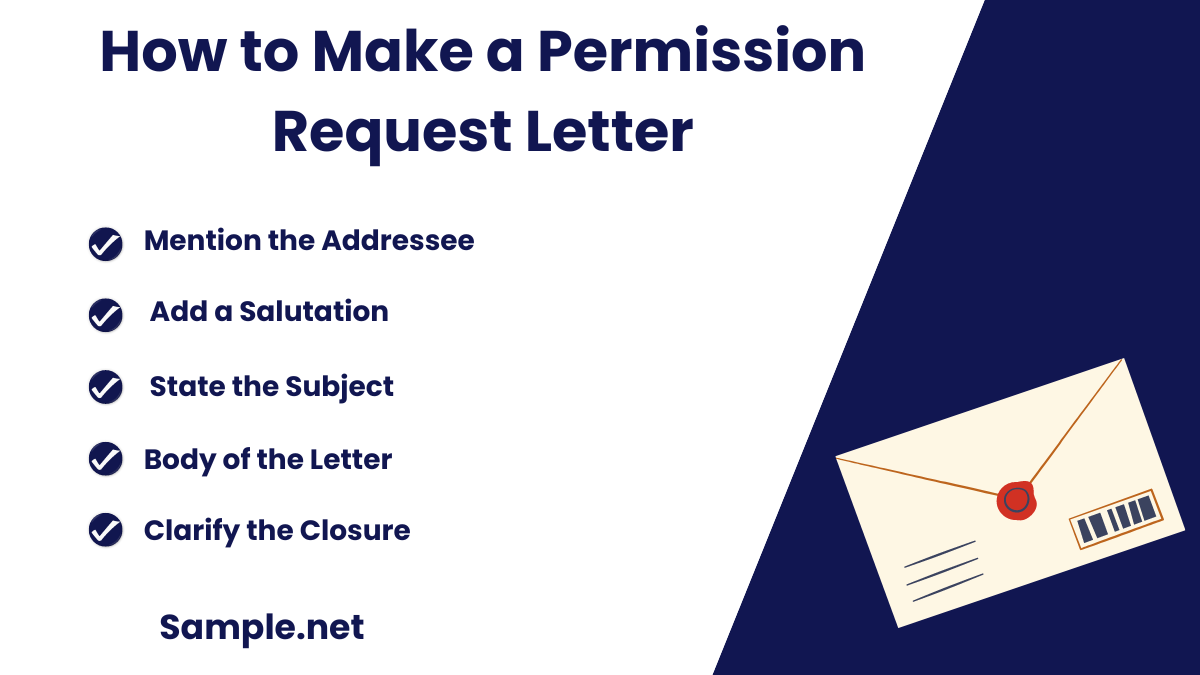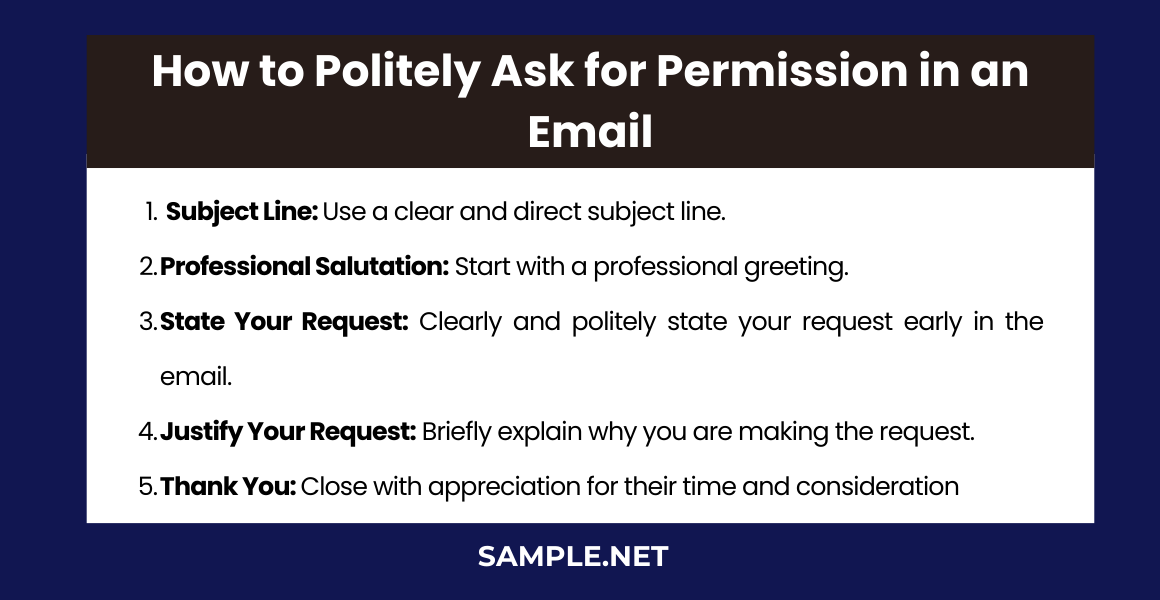Permission Request Letter Samples
-
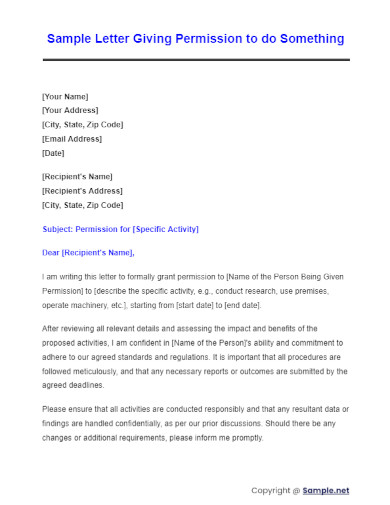
Sample Letter Giving Permission to do Something
download now -
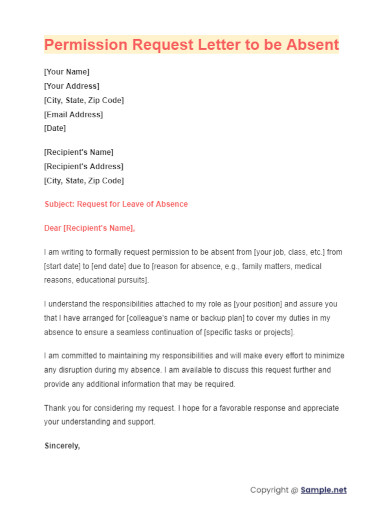
Permission Request Letter to be Absent
download now -
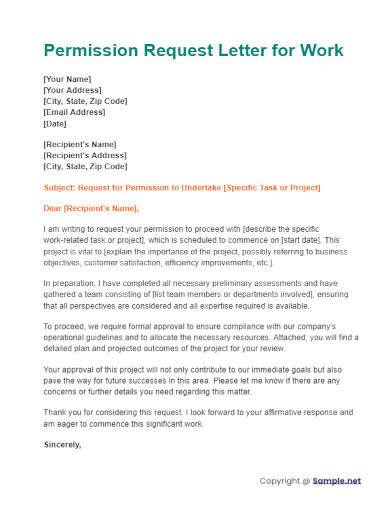
Permission Request Letter for Work
download now -

Letter of Permission to Travel
download now -
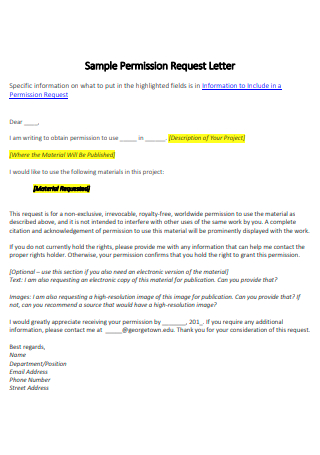
Sample Permission Request Letter
download now -
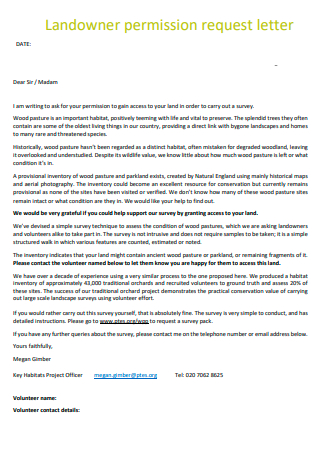
Landowner Permission Request Letter
download now -
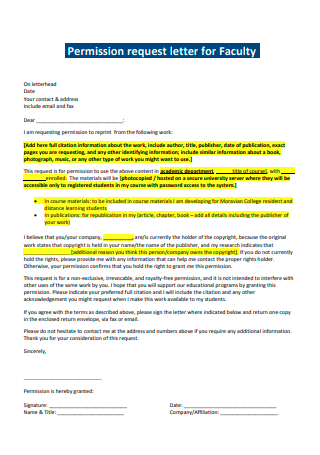
Permission Request Letter For Faculty
download now -
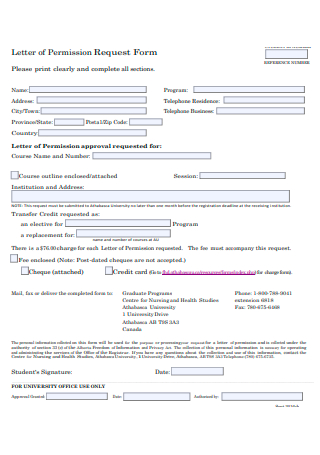
Permission Request Letter Form
download now -
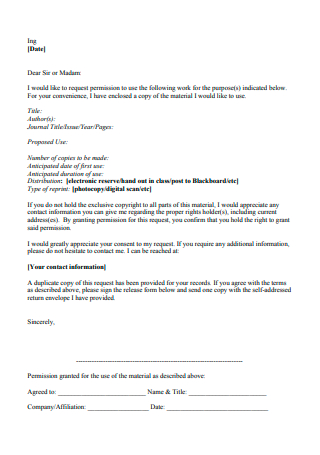
Standard Permission Request Letter
download now -
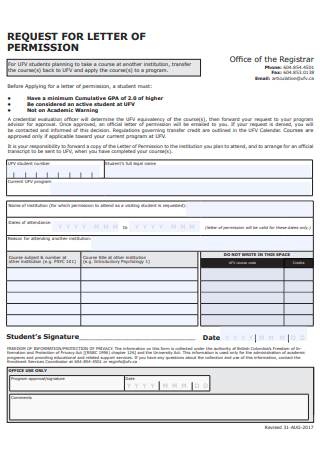
Permission Request Letter in PDF
download now -
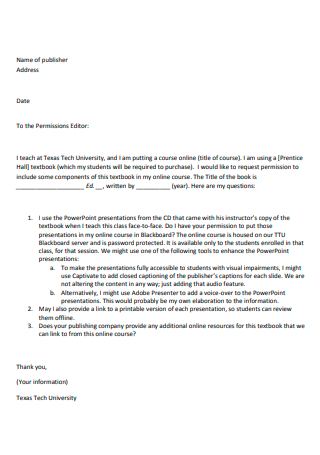
Basic Permission Request Letter
download now -
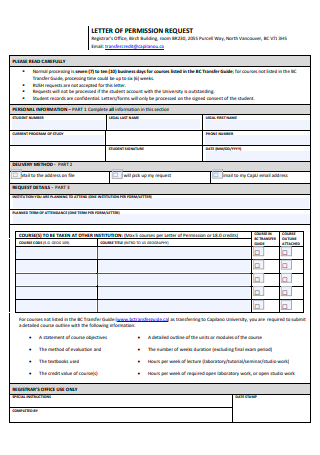
Formal Permission Request Letter
download now -
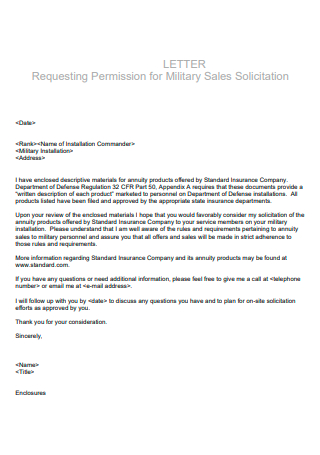
Permission For Military Sales Requesting Letter
download now -
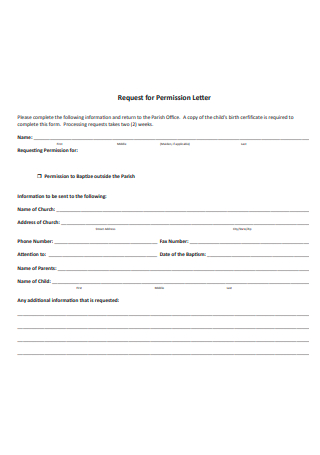
Permission Request Letter Example
download now -
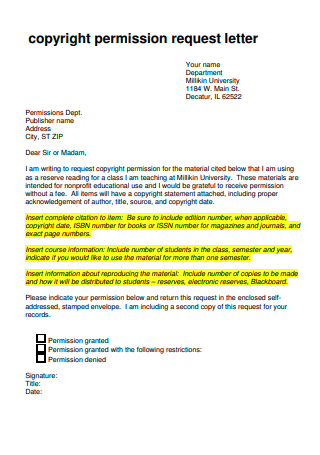
Copyright Permission Request Letter
download now -
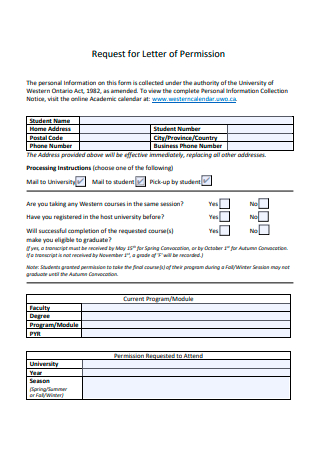
Printable Permission Request Letter
download now -
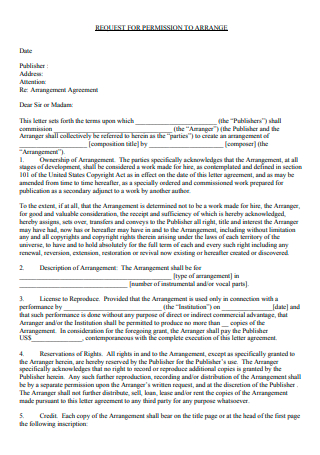
Permission to Arrange Request Letter
download now -
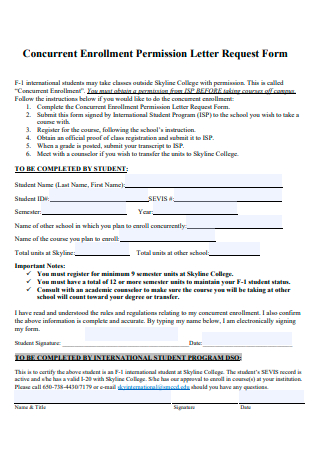
Concurrent Enrollment Permission Letter Request Form
download now -
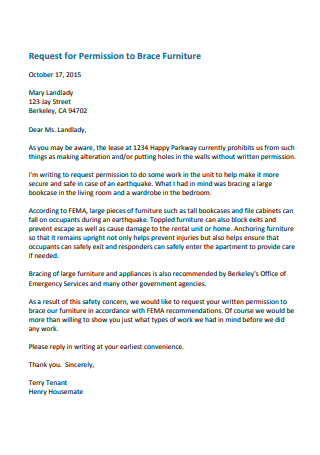
Permission to Brace Furniture Request Letter
download now -
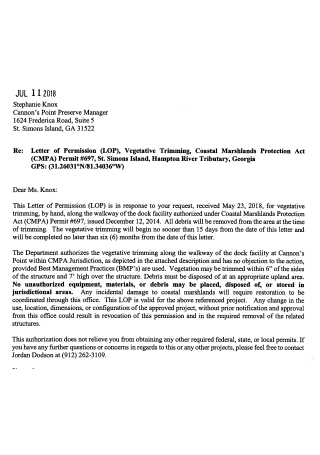
Simple Permission Request Letter
download now -
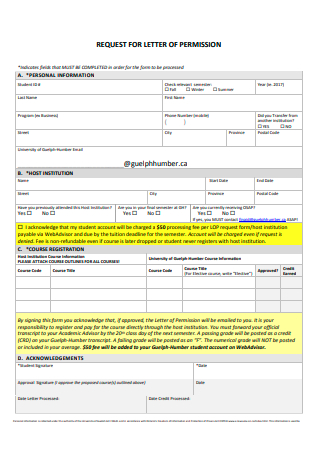
Permission Request Letter Format
download now -
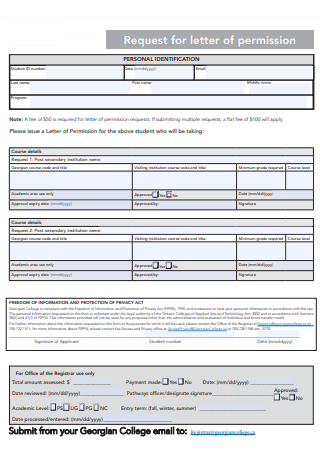
Draft Permission Request Letter
download now -
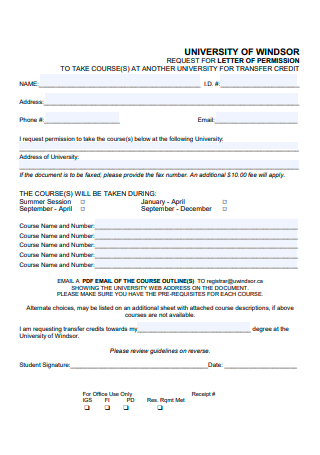
Permission Course Request Letter
download now -
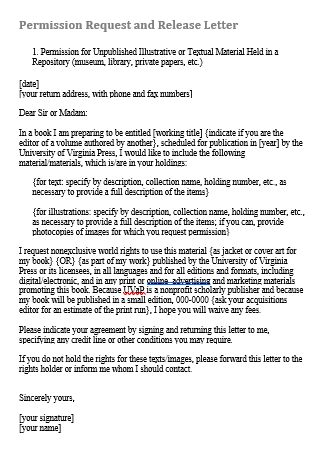
Permission Request and Release Letter
download now -
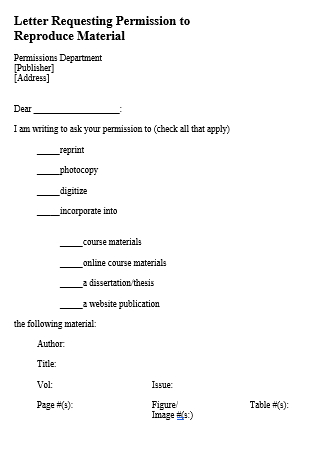
Permission tp Reproduce Material Request Letter
download now -

Permission Request Letter in DOC
download now
FREE Permission Request Letter s to Download
Permission Request Letter Format
Permission Request Letter Samples
What is a Permission Request Letter?
Components of a Permission Request Letter
How to Make a Permission Request Letter
Different Types of Events
Tips for Writing Permission Request Letter
Why is it important to write a permission request letter?
What not to include in a permission request letter?
What to do after writing a permission request letter?
How Do I Write a Letter of Request for Permission?
How Do You Politely Ask for Permission?
How to Write a Letter to Give Someone Permission?
What are 5 Sentences for Permission?
Tips for Writing a Request Letter
How Do You Politely Ask for Permission in an Email?
How Do You Write an Authorization Letter for Claiming on My Behalf?
What is a Simple Polite Request?
What is Another Word for Asking Permission?
What is the Wording to Give Permission?
How to Professionally Request Something?
What is the Formal Expression for Permission?
What is Informally Used to Ask and Give Permission?
Download Permission Request Letter Bundles
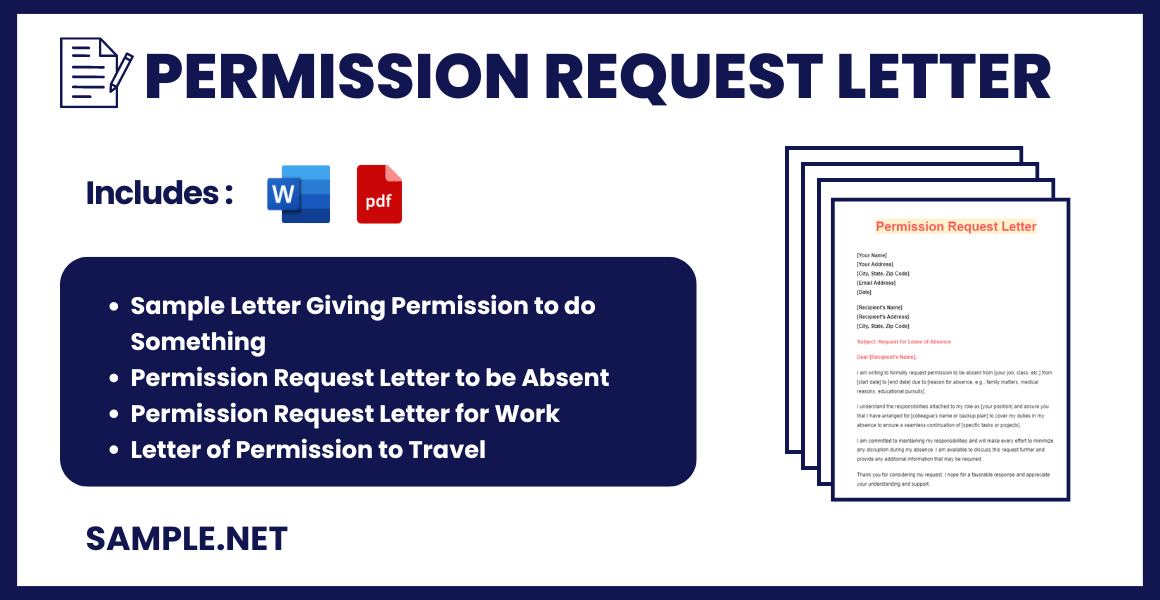
Permission Request Letter Format
Header
- Your Name/Company Name
- Your Address
- Date
Salutation
- Dear [Recipient’s Name],
Introduction
- Purpose of the Request: [Clearly state the reason for the permission request]
Body of the Letter
- Details of the Request: [Provide specific details about what is being requested and why]
- Timeframe: [Specify the timeframe for which permission is being asked]
Closing
- Call to Action: [Politely prompt the recipient for a response]
- Contact Information: [Provide your phone number or email for follow-up]
Signature
- Your Name
- Your Position (if applicable)
What is a Permission Request Letter?
A permission request letter is a written form of communication aimed at obtaining approval from an authority on various matters. It is structured to present a clear and polite request, ensuring the recipient understands the purpose, necessity, and background of the request. Typically, it includes details about the requester, the specific permission sought, reasons for the request, and any relevant deadlines. This type of letter must be formal and courteous, reflecting respect for the recipient’s decision-making power and position.
Components of a Permission Request Letter
The manager will be familiar with what they are about to read if the Objective of writing the letter is stated in the first sentence of the body. This material, as well as the ones listed below, informs them of why and when you are asking for permission, as well as the deadline for your probable return. This list is curated to remind you of the important components found within a permission request letter. Indeed it isn’t much of a hassle to think of what a permission request letter contains but it is still important to know the basics of the layout of the letter. You may also see Permission Slip & Field Trip
How to Make a Permission Request Letter
Every Letter, whether official or unofficial, must follow a specific structure. Non-official letters are sometimes not written in a format and are written in the writer’s own style. However, it is strongly advised that official letters be written in a certain manner. A formal permission request letter must be written with a specific structure and format. It is possible that your manager will refuse to provide authorization, in which case you will need to compose an effective letter. Always remember to address the letter to the correct person, who has the ability to grant authorization. With that being said, the letter should be written in the following format. You may also see Vacation Request Letter
Step 1: Mention the Addressee
Since the letter is professional, it may include both the sender’s and the receiver’s addresses. The sender’s address, on the other hand, is seldom not present in an authorization letter. The sender’s address is not required in some cases due to both parties are already familiar with one other, such as working in the same Company. You may also see Donation Request Letter
Step 2: Add a Salutation
An appropriate greeting should be included in the letter. Positive welcomes should be addressed to the individual. If you know the person’s last name and gender, you should address them with formal titles or professional honorifics. If you don’t know the person’s gender, though, it’s best to offer a generic greeting. When requesting permission, it’s essential to identify oneself and explain why you are requesting it. You may also see Request for Quote Form
Step 3: State the Subject
A few sentences should be used to summarize the purpose or subject as to why you are writing up a permission request letter in the first place. It’s a good idea to explain why specific permissions are necessary for the letter. Make a strong case for this point in order to justify the reason for your request to be away from the office. Don’t get carried away though because since this is merely the subject, you should only be direct to the point. Don’t worry because you will be able to amply explain further in the next step. You may also see Hotel Request for Proposal
Step 4: Body of the Letter
It’s best not to include too many specifics in the letter. This is the most important part of the letter, where the sender must explain the rationale to the recipient in detail. The letter should be composed in a courteous and persuasive manner. It should be at least two to three paragraphs long. Keep it short and concise and remember to be direct to the point as you compose the letter. It’s a good idea to use a sample. You may also see Request For Information
Step 5: Clarify the Closure
The name, designation, and signature should all be mentioned when ending the letter. If desired, the sender might also add their respective Contact information. The letter should be politely closed. Don’t just abruptly end the letter without any indication. You may also see Cleaning Service Request Proposal
Different Types of Events
There are several types of non-corporate events, and it’s easy to become overwhelmed. Understanding the fundamentals, though, will aid in distinguishing between all of them. Although business events such as conferences, seminars, team development workshops, and others may not require a permission request letter since your employer or coworkers will be attending. Determine if a permission letter for an event is required for non-work-related events. You may also see Catering Request for Proposal
Tips for Writing Permission Request Letter
How hard can writing a letter be? One may ask. Sure, it seems easy enough and not as complicated as other formal documents are. But you have to remember that it is essential to not forget any of these items to ensure your request letter is granted permission. Keep reading below and keep in mind the tips this article laid out for you. You may also see Agency Request for Proposal
Why is it important to write a permission request letter?
It’s often vital to have a formal paper trail, which is why knowing how to create an effective permission request letter is crucial. A well-crafted and professional letter will help you clearly get the authorization you need, whether you are asking for time off from your work, requesting copyright clearances, or asking parents for their agreement for a school trip. No matter the reason for making a permission letter for approval, it has a certain degree of importance in physical value. You may also see Development Request for Proposal
What not to include in a permission request letter?
You should avoid apologizing or expressing regret since this would just emphasize the potential imposition your request will cause. Alternatively, as demonstrated in our example permission letters, articulating your needs boldly puts your request in a more acceptable light. Also, fight the temptation to use unnecessarily dramatic language or exaggerate the circumstance in an attempt to shame the manager into agreeing to your request. Threats and ultimatums should be avoided since they might backfire. If you send your letter of permission too close to your deadline, your manager or supervisor may not have enough time to respond or satisfy your request. Always allow them ample time to deliver what you are looking for. You may also see Investment Request For Proposal
What to do after writing a permission request letter?
Writing a clear and confident permission Letter, such as the ones in our permission letter templates, is a crucial step towards obtaining special permission. The next step is to ensure that your permission request is received and followed up on properly. Take the time to locate the person who has the authority to issue the exact authorization you require. The fewer hands your permission letter passes through, the more likely you are to receive the approval you require. It’s preferable to treat your request as final and act accordingly, whether it’s approved or refused. Courtesy in the face of disappointment will earn you respect and cast a good light on your future requests. You may also see Branding Request for Proposal
How Do I Write a Letter of Request for Permission?
Writing a letter of request for permission involves clarity, politeness, and a direct approach to receiving approval for your needs.
- Clear Purpose: Start by stating clearly what you are requesting permission for.
- Justification: Explain why this permission is necessary and how it benefits both parties.
- Details: Include all relevant details such as dates, locations, and involved parties.
- Reference Documents: Attach any supporting documents, like a Request For Quote if relevant.
- Polite Closure: End with a polite statement, expressing hope for a positive response and gratitude for considering your request.
How Do You Politely Ask for Permission?
Asking for permission politely is crucial in maintaining professionalism and respect in your communications.
- Formal Greeting: Use a formal greeting to set a respectful tone.
- Express Gratitude: Thank the recipient for considering your request.
- Clear Request: State your request clearly and politely.
- Reasons and Benefits: Briefly mention why the permission is needed and potential benefits.
- Meeting Request Email: Meeting Request Email suggest a meeting if further discussion is necessary.
How to Write a Letter to Give Someone Permission?
Writing a permission letter involves granting someone the authority to act in your stead or use your property.
- Identify the Grantor and Grantee: Clearly mention who is giving permission and who is receiving it.
- Specify Permissions: Detail what permissions are being granted.
- Time Frame: Mention the validity period of these permissions.
- Conditions: State any conditions or limitations to these permissions.
- Signature: Sign the letter to make it legally binding, similar to a Contractor Request For Proposal.
What are 5 Sentences for Permission?
Here are five example sentences that can be used when asking for permission in various contexts:
- “May I leave early today, as I have a doctor’s appointment?”
- “Is it possible for me to use your car this weekend for a family trip?”
- “Could I please borrow your book for my upcoming exam?”
- “Would it be alright if I reschedule our meeting to next week?”
- “Can I take a look at the Event Planning Request For Proposal before our discussion?”
Tips for Writing a Request Letter
Effective request letters are clear, courteous, and to the point, facilitating a positive response.
- Be Concise: Keep your letter short and to the point.
- Use a Professional Tone: Maintain a professional tone throughout the letter.
- Detail the Request: Clearly state what you are asking for.
- Include a Call to Action: Encourage the recipient to respond or act.
- Proofread: Ensure your letter is free from errors, reflecting your professionalism. You may also see Explanatory Letter
How Do You Politely Ask for Permission in an Email?
Asking for permission via email should be done with tact and proper formatting to ensure clarity and respect.
- Subject Line: Use a clear and direct subject line.
- Professional Salutation: Start with a professional greeting.
- State Your Request: Clearly and politely state your request early in the email.
- Justify Your Request: Briefly explain why you are making the request.
- Thank You: Close with appreciation for their time and consideration. You may also see Apology Letter
How Do You Write an Authorization Letter for Claiming on My Behalf?
An authorization letter for claiming on your behalf should clearly delegate authority and outline the scope of actions permitted.
- Introduction: State your name and that you are authorizing someone else.
- Authorized Actions: Specify what the authorized person can do, such as handling a Request for Proposal Letter.
- Validity Period: Mention how long the authorization is effective.
- Identification Details: Provide identification details of both the authorizing and authorized persons.
- Notarization: Get the letter notarized if required, to lend it greater legal weight.
What is a Simple Polite Request?
A simple polite request courteously asks for something, like, “Could you please provide me with this week’s schedule?” You may also see Excuse Letter
What is Another Word for Asking Permission?
Another term for asking permission is “soliciting consent,” often used in formal contexts like a Consent Letter.
What is the Wording to Give Permission?
The wording to grant permission could be, “You have my permission to proceed with the proposed action.” You may also see Authority Letter
How to Professionally Request Something?
To request something professionally, clearly state your needs and reasons, maintain politeness, and reference relevant documents like an Authorization Letter.
What is the Formal Expression for Permission?
A formal expression for asking permission is, “May I have your permission to…” often documented in a Warning Letter.
What is Informally Used to Ask and Give Permission?
Informally, people often use phrases like “Can I…” to ask and “Sure, go ahead” to give permission, typically in casual conversations or notes. You may also see Board Resolution Letter
In conclusion, the permission request letter is a crucial document that serves as a formal request for authorization in various professional, educational, or personal scenarios. The effectiveness of this letter can significantly influence the outcome, making it imperative to be clear, respectful, and thorough. Samples and templates, such as those used in a Contract Letter, provide a foundational guide for crafting a compelling request. This article has outlined the steps and considerations necessary to write a successful permission request letter, enhancing the likelihood of obtaining the desired permission.

